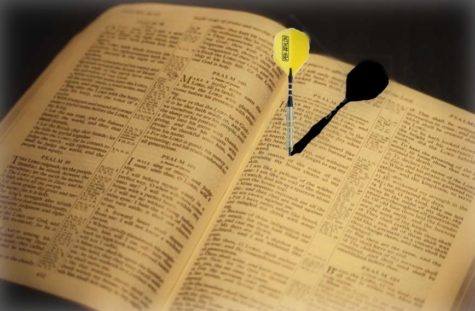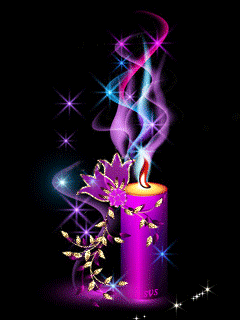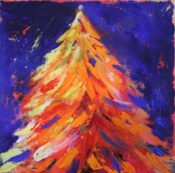Cloud Scrying
Most of us watch clouds images at one time or another. It is as if we are guided to look up and watch the patterns unfold at a given time. Fluffy cumulus clouds bring messages, which sometimes seem to tell an unfolding story. While flying on an airplane, it is fun to watch the clouds from above as if celestial art. You may receive telepathic messages while watching cloud images, coming from a spirit guide.
If a wind is present to keep them moving, so much the better. You also need to have a question or issue, a purpose for the inquiry. Do not ask about frivolous things to test the oracle, but instead ask about something you really need help with, a problem you have not been able to resolve. Treat it with respect and you will receive a response you can respect.
You do not have to, but laying on the ground will provide a better view of the sky and also be a lot more comfortable If you do not want to lay on the ground, find a pool or fill a dish or bowl with some water, so you’ll be able to see the sky reflected in the liquid, like a mirror. This will also be advantageous for the “reading” as it will limit the field of observation for the prognostication.
Next, close your eyes and try clearing your mind of all distracting thoughts. When you feel ready, open your eyes and scan the sky for clouds. It is really important that you do not try to force the shapes you see to fit the answer to your question. Sometimes the clouds will offer shapes that have nothing at all to do with your query. The secret is to be patient, being sensitive to the moment you can gradually define the reading until it becomes clear. If you feel youdid not receive an answer, wait for a while and try again, always being careful to phrase the question as exactly as possible.
Signs are usually open to more than one interpretation. Be also attentive to mirror shapes in your field of vision, instead of concentrating solely on the obvious ones. The position of the clouds also have meaning: are they low or high on the horizon, are they traveling south, north, east, or west? What kind of clouds are they? Thick, thin, sispy, heavy, full of rain?
When you have finished, clearly define this by thanking the oracle clouds and taking a few moments to consider the answers received. In time, and with practice, your cloud reading skills will improve.
Sources: Crystal Links and Occultopedia
Nephomancy – What is it?
Nephomancy or Nephelomancy is divination by studying clouds. This involves observing and interpreting the color, shape and position of clouds in the sky. The Celtic Druids made extensive use of nephomancy, which they called neladoracht.
Celtic shamans sometimes practiced a form of Nephomancy that was closely related to Hydromancy and Scrying. After finding a hollowed stone or other depression that was filled with rain water, priests would look into it studying the cloud formations reflected on the water’s surface.
To practice Nephomancy today, one should ask specific questions and then observe the shape and disposition of the clouds. This is easy enough to do in most parts of the world and requires only a basic understanding of the forces involved.
Obviously to attempt the performing of Nephomancy you need a day when the sky is clear and cloudy, a day when the sky is sufficiently clear to define the shapes of the clouds.
Throughout history symbols of political or religious importance have been seen in the clouds. In A.D. 312 when Emperor Constantine was marching against the army of Maxentius at Rome, both he and his entire army saw a shining cross of light amid the clouds. It was said the cross contained the Greek words “By This Conquer”. Later that night Christ appeared to Constantine in his dreams bearing a cross in his hand ordering Constantine to have a military standard made in the same image. Under this standard his outnumbered army was victorious. Down through history entire military battles have been witnessed in the clouds.
A Medieval form of nephomancy involved summoning ghosts and specters to project images of future events onto clouds.
François de la Tour Blanche wrote that aeromancy (a form or nephomancy) was the art of fortune-telling when specters materialize in the air, possibly with the aid of demons, projecting images of the future onto clouds like a magic lantern.
Modern nephomancers observe the ever changing shapes of cloud formations as a form of meditation.
Bibliomancy – What is it?
Bibliomancy is a form of Stichomancy or Libromancy (“divination from lines”), which involves selecting a random passage from a random book of any nature. Bibliomancy and Stichomancy have been popular methods of divination for at least 3000 years, when the I Ching was first used to divine the future.
The method of employing sacred books (especially specific words and verses) for ‘magical medicine’, for removing negative entities, or for divination is widespread in many religions of the world.
According to the Oxford English Dictionary, the word bibliomancy “divination by books, or by verses of the Bible” was first recorded in 1753 (Chambers’ Cyclopædia). Sometimes this term is used synonymously with stichomancy “divination by lines of verse in books taken at hazard”, which was first recorded ca. 1693 (Urquhart’s Rabelais).
According to one source, the original use of Bibliomancy was a method to discover whether or not a person was innocent of sorcery. It consisted of weighing the suspect against the great Bible in the local church. If the subject weighed less than the Bible, he or she was considered innocent. Later, Bibliomancy became attached to any divinatory use of the Bible.
In medieval times it was believed that Bibles laid on a child’s head would induce sleep, and that reading from the Bible to a pregnant woman would give her a safe delivery.
Some Christian and Jewish groups believe that the Bible forbids divination in general, however, according to the Shulchan Aruch, it is not the sin to divine an answer using the “goral“, the practice of opening the Chumash to see an answer to a question, or asking a child for the first piece of scripture that comes to his mind.
Here’s how it works:
- A book is picked that is believed to hold truth.
- It is balanced on its spine and allowed to fall open.
- A passage is picked, with the eyes closed.
The name Rhapsodomancy has also been used for this practice, which involved opening the book at random and then interpreting the omens in a prophetic fashion, usually using the first words or sentences read. A historical precedent was the ancient Roman practice of sortes “divination by drawing lots” which specialized into sortes using the texts of Homer, Virgil, and the Bible.
St. Francis of Assisi, to seek divine guidance, is said to have thrice opened to a random page of the book of Gospels in the church of St. Nicholas. Each time he opened to a passage in which Christ told His disciples to leave their earthly belongings and follow Him.
In Iran, Bibliomancy using the dīvān of Hafiz is the most popular for this kind of divination, but by no means the only kind. The Qur’an, as well as the Masnawī of Rumi may also be used. Fāl-e Ḥafez may be used for one or more persons. In group bibliomancy, the dīvān will be opened at random, and beginning with the ode of the page that one chances upon, each ode will be read in the name of one of the individuals in the group.
The ode is the individual’s fāl. Assigning of the odes to individuals depends on the order in which the individuals are seated and is never random. One or three verses from the ode following each person’s fāl is called the šāhed, which is read after the recitation of the fāl. According to another tradition the šāhed is the first or the seventh verse from the ode following the fāl. An ode which had already been used for one individual in the group is disqualified from serving as the fāl for a second time.
Because book owners frequently have favorite passages that the books open themselves to, some practitioners use dice or another randomiser to choose the page to be opened. This practice was formalized by the use of coins or yarrow stalks in consulting the I Ching. Tarot divination can also be considered a form of bibliomancy, with the main difference that the cards (pages) are unbound. Tarot can also be considered a form of bibliomancy, with the main difference that the cards (pages) are unbound.
There is a prevalent practice among certain, particularly messianic, members of Chabad-Lubavitch Chasidic movement to use the Igrot Kodesh, a thirty-volume collection of letters written by their leader Menachem Mendel Schneerson for guidance.
Another variant requires the selection of a random book from a library before selecting the random passage from that book. This also holds if a book has fallen down from a shelf on its own.
English poet Robert Browning used this method to ask about the fate of his enchantment to Elizabeth Barrett (later known as Elizabeth Barrett Browning). He was at first disappointed to choose the book Cerutti’s Italian Grammar, but on randomly opening it his eyes fell on the following sentence: ‘if we love in the other world as we do in this, I shall love thee to eternity’ (which was a translation exercise).
Sources: Wikipedia and other sources
Related Posts
Of Interest
Debbie: Reading Candle Wax
Bridget Grimes: 310112_svyatki2_500
Mari: Reading Candle Wax
Ali: Notarikon
ALI: Notarikon





